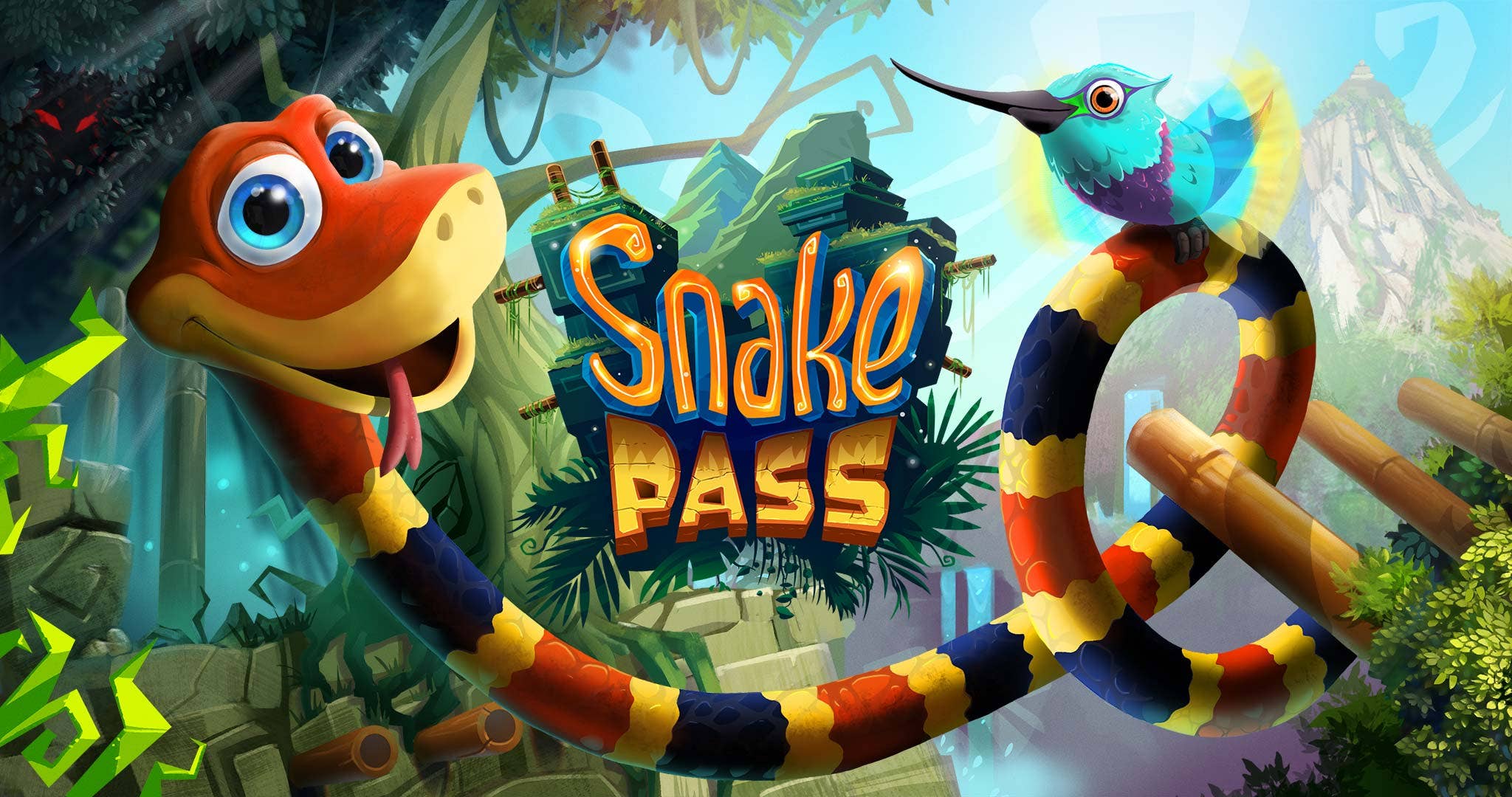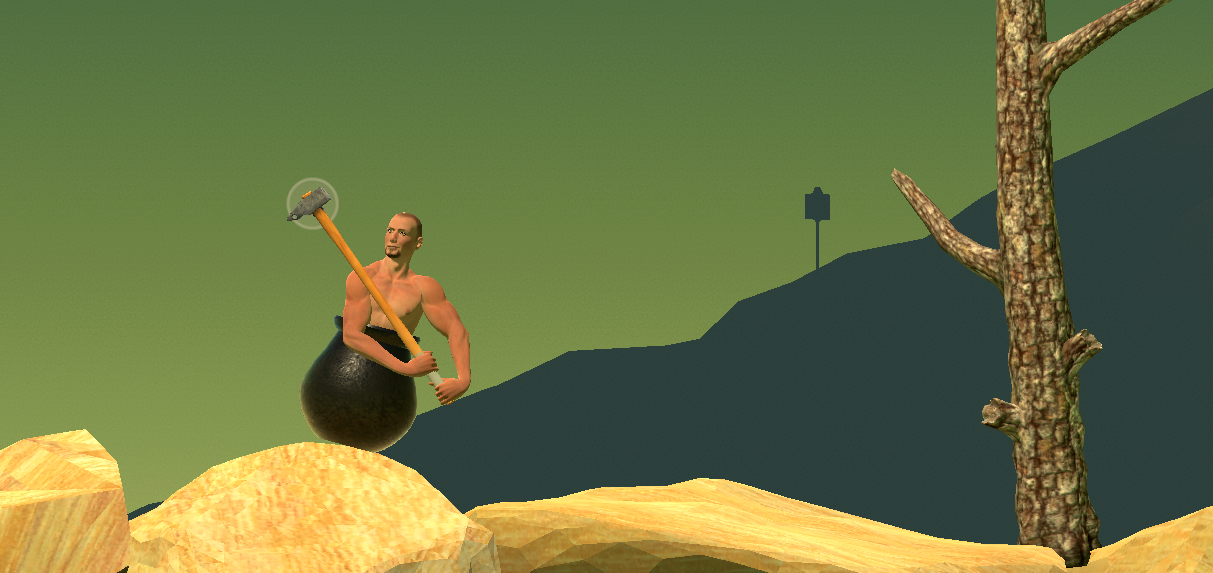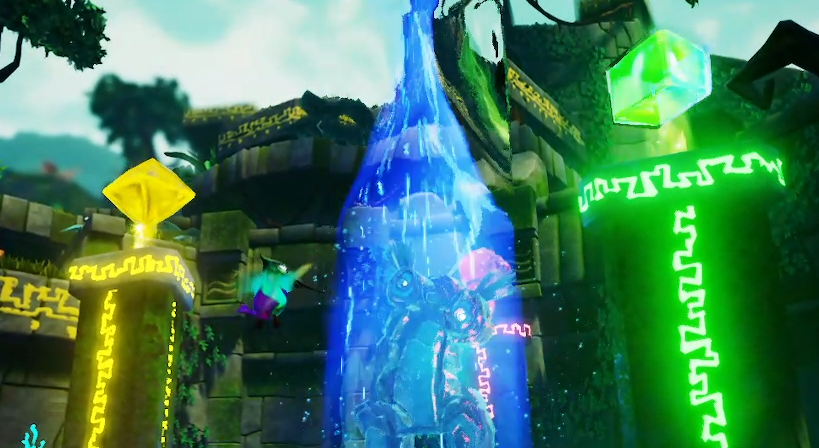i wish snake pass was more like getting over it

Snake Pass is a disarmingly charming game that has a really interesting premise: What if you made a game where you had to move like a snake? Well, I like snakes, I think this is a great idea, and I finally managed to play it on stream.
But... I didn't really like it, and I think I know why? While the basic premise is pretty good, the game generally feels uninteresting and not rewarding. Alarmingly, if you can imagine it, comparing it to Getting Over It with Bennett Foddy is probably the easiest way to explain how I feel.
movement mechanics

The movement mechanics in Snake Pass on their own are pretty great, in my opinion. You can't really move in a straight line for very long, so you have to zig-zag across the terrain like a real snake. You can coil up before extending upwards to achieve higher vertical heights. You can grip onto sticks for support as you clamber from one precarious position to another. It feels like being a snake and it's great. However, there are quite a few buttons you have to hold simultaneously in order to move in certain ways, and it can be really difficult to figure out how to move because you're paralyzed by the uncertainty of which button to start holding down or release. In other words, while you know what you need to do, it typically ends up being the case that it is quite hard to execute what you are thinking. This isn't necessarily a bad thing.

Getting Over It has a similar situation. You play as a man sitting in a chamberpot who can only move by swinging an oversized yosemite hammer around, which is a situation I'm sure I won't have to explain since it happens to all of us. You can grip ledges or protrusions to pull yourself up. You can push the hammer downwards to jump. You can spin it around you against the ground to kinda move around. It feels like the real thing that we have all definitely experienced and it's great. However, unlike Bennett Foddy's earlier works that I am familiar with like QWOP and GIRP, Getting Over It has only one movement control: Moving the mouse. There are also so many different ways to use and misuse the hammer, and you often end up shooting yourself in the foot with it. In other words, it has one movement control and it's awful. This is also not necessarily a bad thing.
Both Snake Pass and Getting Over It have controls that feel intended to be difficult but rewarding to master. Why do I like Getting Over It, but not Snake Pass?
applications
The ways in which you can use movement mechanics to traverse the level in Snake Pass feel limited. Each obstacle is often just a variation of a previous one in a different shape or with less save points while requiring the same kind of skills to overcome. You are never compelled as a player to use a specific aspect of your movement skills and in fact, many interesting-looking obstacles can be bypassed merely by slithering over them and "ignoring" the puzzle of figuring out how to use the environment.

For example, collecting the yellow gem in this level has a design that suggests that I should coil around the stick to travel over the spikes. However, I ended up completing this puzzle by merely speeding over the obstacle as fast as I could as if it were flat land instead, a technique I used many times in other parts of the game. In fact, the fact the spikes exist here don't make the movement that I have the perform as a player any different. I've had to traverse structures like this before, only now there are spikes underneath if I fall off. I fail either way.

Meanwhile, in Getting Over It, many parts of the game require you to use your movement mechanic in a new way. Here, you have to swing the hammer from below the surface your hammer is on, in a kind of strange land traversal that you would normally do except that the center of gravity is in a different place. In other places, the contact physics of how your hammer interacts with the surface might be different. Some parts ask you to move slowly and others fast. Every time you find a new part of the level to climb, there is usually something new to contend with.
In general, Snake Pass's movement mechanics feel underutilized. It doesn't feel varied enough. There are places where the game asks you to move in interesting ways, such as when you need to move a ball into a socket or pull a lever to open a door. But, you are generally not doing these tasks for most of the game.
exploration
Mastering a difficult task can be rewarding on its own, but it's my humble opinion that it is better when mastery or progress is rewarded in some way. Unfortunately, Snake Pass doesn't really have much of any.
Levels are grouped together into sets of four. Levels 1-4 use the same environment art and levels 5-8 feel slightly different from the first four. I couldn't really tell the difference. Levels 9-12 are noticeably different and interesting, but the dark lighting makes it hard to see the terrain which makes gameplay more difficult in a way that doesn't really feel like fun (perhaps I should have boosted the gamma level at this point). And even though the environment art is different, there still isn't really much in the way of new mechanics as I talked about earlier.

Meanwhile, the story spends several of the early levels hinting that a bird is breaking the portal gates that you are repairing, and you need to repair the gates because you can't get home without them. The story, up to level 9 at least, is just that and it took me about two hours. And at the end of each set, you get a cutscene where the main character Noodle receives an artifact from a thankful spirit who happens to be benefiting from your work or something which... just unlocks the time trail mode for the levels you just played. There are also floating bubbles of water and coins that can be collected in each level, but they are never referred to diagetically and it's never made clear why Noodle or even you as a player might want to collect them. The story of Snake Pass is dreadfully boring and it's fed drop by drop to you.

Meanwhile, in Getting Over It, it's only a minute or so before the narrator immediately starts speaking to you with exposition about what the game is and setting the tone for the rest of the game. As you get through more of the game, the narrator talks more and before long, the scenery starts to change. Admittedly, it can take someone a while to get through the game and see those new, different and challenging parts of the game, but each time you fail, you trigger a remark from the narrator which is its own kind of reward too (and you will fail a lot). It feels genuinely fun to see more of the game. Look at this weird furniture room I found!
conclusion
It's not that I want Snake Pass to be as difficult as Getting Over It, but I wish it used its movement mechanics more fully and it had a more compelling story or reason to explore. It's hard for me to feel like I should keep playing. I think it feels too long for its own good and there isn't a story that I'm interested in learning more about and the gameplay is challenging, but not rewarding. I know there's a spooky bird and... that's it, really?
Maybe Snake Pass could be better simply by combining the four-level sets into the length of just one level. Or, it maybe it would be better if it was just harder all around. Maybe I just need some contrived, cute reason for why I'm hydrating this snake to make it fun. I don't know what would work, but it doesn't feel fun yet to me.